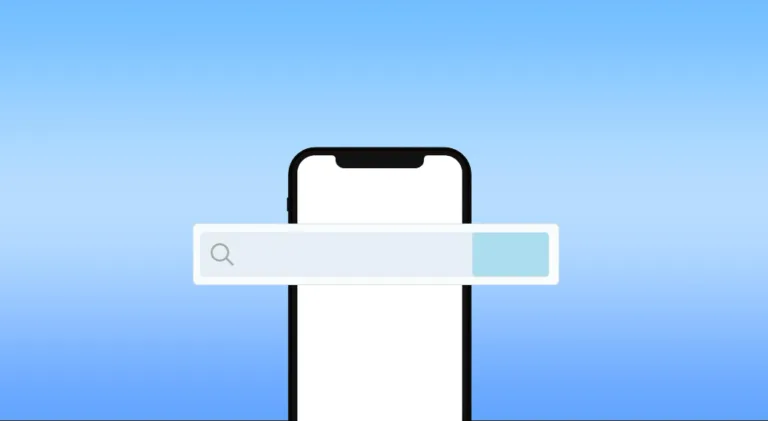Let’s discuss the process of setting goals for blogging. Maybe you’ve been an occasional blogger for a while, but you’re now ready to elevate your site to the next step. You’ll require real blog goals to take you there. In this article, we’ll go over the steps to smart goals for bloggers, regardless of where you are currently.

Doing things without a plan is leaving your success to chance. Make a plan and you now have a set of steps to get you and your blog where you want to be.
SMART Blogging – Effective Goal Planning
- Set Specific Blog Goals
- Choose Measurable Goals
- Pick Achievable Blogging Goals
- Decide on Relevant Goals for Your Blog
- Time-Bound Goals Will Keep You on Track
Reasons Why You Could Be Ready To Step Up Your Blogging Operations
You could be looking to earn more than just a part-time revenue but you’re fed up with the relatively low amount of traffic. It’s possible that you’re experiencing a negative trend. A decline in the number of visitors, email subscribers as well as social media users, and revenue.

If you’re looking to get your blog going at high speed, the most effective thing you can do is to use SMART goals for your blog to help you get there. No matter if you’re starting a new website for the very first time, or if you’re looking to make your blog’s current one more serious, goals for blogging will give you a clear plan to know what steps you need to take to succeed.
This will help reduce anxiety of the “what do I do next?” variety and make your whole growth process more effective.
If you are not sure what you should be aiming for with your blogging we’ll help you, and provide concrete steps (including actual blog goals examples) you can follow to elevate your site to the next stage.
Why Certain Goals For Your Blog Are Crucial For Launching Your Blog To Greatness
Without a set of goals to guide your website, you’re just like a captain of a ship sailing off with no idea which direction they’re heading.

They might have a fantastic vessel, be able to navigate with the stars and even have the perfect crew however, without a destination they’ll remain lost at sea.
So it could be that you’re working in a niche that is appealing and you even have a flair for writing, but without goals, you’ll struggle to get ahead. You’ll get involved in marketing via email, then move onto social networks for a while and then write a blog article or two, and wrap up by reading a couple of pages of SEO articles. Yes, they’re the most important aspects of blogging, However, without direction, it’s just a lot of nonsense without any results.
Moving from a job that is part-time to a full-time blog requires sitting down and defining what you want from your blog, and then deciding what steps you’ll need to follow to reach your goal. This is exactly what we’re doing here today.
SMART Blogging for Effective Goal Planning
Now we are ready to set goals for your blog we’ll guide you step by step through specific goals that are SMART so that you can implement them to improve your blog.
What Are Goals For SMART Blogs?
S.M.A.R.T. blogging can be described as an acronym that stands for:
- Specific objectives
- Measurable goals
- Achievable goals
- Relevant goals
- Time-bound goals
Utilizing the SMART goal-setting framework in your goal-setting exercises will put you on the right track to make sure that you’re setting yourself up to achieve long-term success.
Step 1: Set Specific Blog Goals (+ Real Examples to Use)
What are your expectations for this blog?
What are you looking to make better?
Check out these blog goals:
- What is the amount of money you hope to earn from your blog?
- What goals for your traffic can you achieve?
- What frequency do you wish to post to your blog?
- What is the amount you would like to expand your social media following?
- What do you think you would like your email list of subscribers to appear like?
- What’s your SEO strategy? What are your results in terms of SEO traffic in the present?
- What number of backlinks do have on your website?
Instead of simply saying “I’d like to make more money,” or “I want more traffic,” be more specific about your blog’s goals. What amount each day or month do you hope to bring in? Are you expecting 100 people per day? 1,000 people in a day? 10,000 people per day?
What Are Your Blog’s Revenue Goals?
- What is the minimum amount you’ll have to earn to become a full-time blogger?
- What’s the gap between what you’re making from your blog and the amount you’ll need or would like to earn?
Blog Posts
- How often do you post new blog posts?
- How often would you like to publish new content to your blog?

Let’s consider a hypothetical set of blog goals that are specific to the scenarios that one could utilize:
- Blog content should be updated each week
- Get 25,000 visitors every month
- An annual blog income of $40,000
- 10,000 email subscribers
- Two social media users
- Increase SEO rankings for every piece of content
- The authority of domains is growing
They might not be the exact blog’s objectives, but we’ll be using them as a guideline throughout this article so that you can understand the SMART blogging goals in practice.
Step 2: Choose Measurable Goals
Another crucial aspect to consider when SMART blogging is to select goals that are quantifiable. A lot of the goals we set above are easily measured.
You’ll be able to tell if you’re publishing new content, how many visits you’re receiving, and whether your revenue is increasing. It’s even simpler to gauge by breaking down your goals into smaller chunks.
Break Up Your Blogging Goals for Measuring Success
Creating measurable blogging goals is essential to success. Let’s take a look at the goal of earning income. You’re hoping to earn the equivalent of $40,000 per year, but it is possible to break this into months or days to get a better understanding of the amount you’ll earn.
That’s $3333 a month or $109 per day.

Be aware, however, that you might not meet your goal of earning income as soon as you begin. It is possible to earn $50 per day today, and then $200 per day at the end of the calendar year. It is possible to increase your income goal gradually each day or month until you get to the level of $40,000 and as long as the trend is up towards your goal levels then you are on track.
It’s the same with the number of people you bring to your site.
Let’s say you’re receiving five thousand visitors per month. The idea of setting your goals for traffic per month is sensible since it’s unlikely that you’ll increase your traffic from 5,000 to 25,000 in a matter of minutes. You could see:
- The March edition of the festival saw 6,000 people visit
- In April, 8,000 people visited
- 15,000 people visited in May
- …and the cycle continues until you’re hitting the 25,000 threshold
Another thing to understand about blogging is that you’ll gain momentum as you move along. It’s difficult to overcome the initial hurdle of early days with few visitors and little income. You’ll probably have a harder time going from 0-5,000 visits each month than going between 10,000 and 20,000 monthly visitors.
Get the Right Tools to Measure Your Blogging Goals
Tools for blogging will help you keep on top of your goals and determine the extent to which you’re achieving them. Some of the top tools for blogging that measure this data include:
Google Analytics
Google Analytics tracks a variety of metrics, including the number of visitors, the content being viewed, the source of traffic, and new visitors vs. return visitors, as well as so on.
Site Kit from Google
Site Kit by Google is a WordPress plugin that lets you join your WordPress website to Google’s collection of web tools, which include Analytics, Search Console, AdSense, and Speed. This allows you to view all the important information about how your blog’s doing without having to go away from your WordPress dashboard.
Ahrefs
Ahrefs is another amazing blogging tool that can assist your blog with SEO goals. With extensive information about competitors in your field SEO tips, website optimization analysis of keywords, This tool packs a huge punch. It also comes with a no-cost backlink checker that lets you check how your site performs in terms of the authority of the domain.
Email Autoresponders
ConvertKit, Aweber, or Mailchimp Aweber, ConvertKit, or Mailchimp: People who are seeking to expand your list of email subscribers will benefit from one of these tools for marketing your email. They allow you to keep on top of your email subscribers as well as provide you with detailed data on the performance of your blog. My personal preference would be ConvertKit for bloggers of stages of growth as they have launched an extensive free plan in the last few days. You can read my analysis of these three tools to determine which one will work best for your blog.
Step 3: Pick Achievable Blogging Goals

A is for achievable.
We all enjoy the thought of reaching to the moon, but there needs to be some element of reality when you choose your goals for blogging. You’ll be the first to feel as if you’re a failure in the event that you fail to meet impossible goals.
The honest, hard reality is that blogging requires an enormous amount of time and energy. The work you put into it today might not yield real results for months or even years down the road. You won’t be ranked #1 in a tough Google search the day that you post an article. You’re unlikely to gain millions of people following you on social media after your first or even your tenth blog post. You’re unlikely to earn thousands of dollars in affiliate marketing after publishing up to three or two blogs.
Being a successful blogger means always putting in the effort every day every month as well as a year in and year out. It also involves setting realistic goals.
You’d like to increase the number of people to visit your blog. If you’re currently getting 1,000 people monthly to your website, it’s likely that you won’t achieve the 500,000 mark in a relatively very short time. If you have 50 subscribers to your email list, you’re likely not going to be able to get 10,000 subscribers in the next month. If you’re earning just $10 a day, odds are that you’re unlikely to be a millionaire any time in the near future.
Just be realistic when setting your blogging goals.
How to Know if Your Blog Goals are Achievable
How can you tell whether your goals for blogging can be achieved? This is a good question and the answer will not to be identical for each blogger.
The first thing you should do when you set SMART feasible goals is to make a list of where you’re at. With our list of blog goals that we discussed earlier in this article, ask yourself a set of questions, such as:
- How many people per month do you attract?
- What is your annual earnings?
- How many subscribers are you able to count to the email newsletter?
- How many followers on social media do you have today?
- What is the number of backlinks your blog currently has?
- How often do you post content?
- How many pages/posts require an update to their SEO?
Another thing to consider is how far you’ve come since you began blogging. Review the months, days, or years of information you’ve accumulated concerning your blog.
What trends do you see? Are you witnessing a steady growth in traffic, profit and email subscriptions? Have you had times when you saw more traffic than currently? If so then what happened when you were more prosperous? Did you post more often? Promote more?
After you’ve collected this information think about what is achievable next for your blog. If you are currently posting one blog post per month, can you publish four times per month? Do you have the time, energy, and funds to write more frequently? If your lifestyle doesn’t allow you to write that frequently Are you willing to sacrifice other things in order to have this time?
If you’re trying to earn $40,000 annually and you’re earning very small amounts of money from your blog this is probably not an achievable goal unless you make major adjustments on your website. It’s the right time to look at your reasons for not making profits.
Do you receive a large number of visitors, but low profits? This could mean that you’re drawing in visitors, but not turning them into any sort of income.
It could be that you’re not able to find enough income sources on your blog Perhaps it’s that your blog’s content isn’t written in a way that can convert into sales.
It’s the right time to talk with yourself about what’s working and not working for your blog. Also, it’s an opportunity to evaluate how much time you’d like to devote to your blog. If you’re able to devote a couple of hours per month on your blog and you don’t expect to see an enormous increase in your blog’s performance. Actually, your blog will probably never grow when you’re not willing to put in the hard work and effort into it. Be realistic.
Step 4: Decide on Relevant Goals For Your Blog
The fourth component in the SMART blogging acronym is R. It is a reference to relevant. What is the meaning of choosing appropriate goals for your blog? It is about choosing goals that fit with your blog.
Don’t make your decisions by looking at what others are doing, pick your goals based on what your blog and you are capable of.
One example is that one of our example goals is to increase the number of followers on social media. Social media is an extremely effective method to bring traffic to your website however, it could be a massive disappointment. Just because you have many followers on social networks does not necessarily mean you’re going to be able to increase blog traffic.
A lot of social media platforms purposefully restrict the number of people who can view external links. This means that you could post hyperlinks to your blog via Twitter or Facebook but then find out that just a small percentage of your users are viewing it.
If you’re a pro at social media and have mastered algorithms, opting to expand your social media following as a priority can be a great tool. However, if you’ve already spent an enormous amount of your time and energy on social media and you aren’t bringing people to your site ii is time to spend your time and energy on something else that will be more rewarding.
Step 5: Time-Bound Goals Will Keep You on Track
The last goal of SMART blogging is T, which stands for time-bound.
Owning your own blog provides you with a lot of freedom for your own personal life. You are able to choose your time and what you wish to write about and the place of work… it is possible to write from your home, at the park, at an office, or even at your favorite coffee house. You could even travel around the world while blogging.
Beginning a blog as a business ALSO means you’ll need to become your own boss. Set your deadlines the same way you would if you worked for an employer. If you held a corporate job, the boss would not tell you, “Go ahead and get me that report whenever you have the time and feel like it.” Instead, they’d explain, “Your deadline is 3:00 pm on Friday.”
To be successful as a blogger, you have to develop the same type of discipline. Nobody is going to make you improve your blog. The blog’s journey begins and ends with you.
Use Successful Habits to Effectively Reach Your Goals
My opinion is that you won’t be able to achieve the SMART goals without employing the right practices. It’s possible to have 25,000 visits per month to your website, but how will you achieve that? The goal is sizeable however, how do you reach sizeable goals?
The goals are the destination but smart choices are the way to get there. For example, you realize you must create and market content to get traffic. But are you actually making time for this? Are you planning your schedule to ensure that you’ll be able to devote time to your blog or do you try to squeeze it into your already hectic schedule?
If you’re not able to block at most a few hours each week to write, you’re probably not likely to achieve the results you’d like to see. There may be sporadic success, but you’re never going to have the consistency of continuous success that you’ll need to have in order to become an active blogger.
Are You Ready to Set the Right Blogging Goals Today?
What are you feeling right now? Are you feeling energized? Are you prepared to tackle the world and smash it off the park by launching your blog?
I hope that this guide to the process of setting SMART blog goals can encourage you to create (meaningful) objectives for the future of your blog. Let us know in the comments section below if this article helped and how you do.









